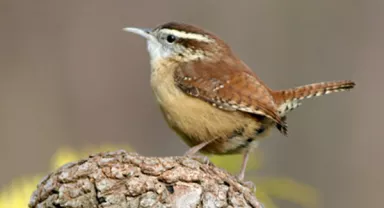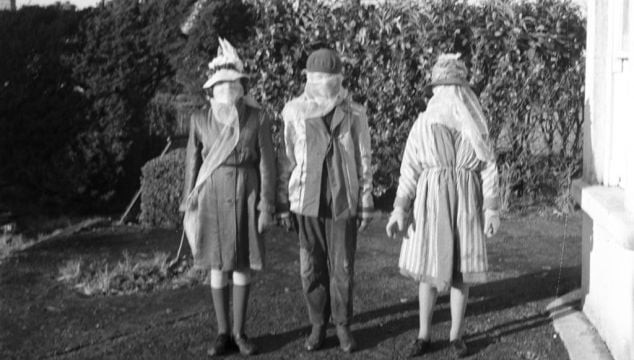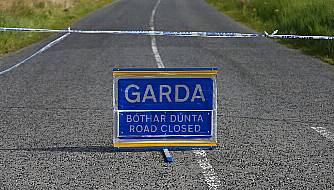As Christmas traditions come and go, Wren Day, which falls on St Stephen's Day, is one that has survived for centuries in communities around the island of Ireland.
Still practised to this day, Wren Day is an Irish celebration which centres around the hunting of a wren bird followed by a procession through the community by wren boys.
As mentioned in research by Sylvie Muller in The Irish Wren Tales and Ritual, in the past, the wren was usually hunted on Christmas day and killed by the wren boys with a blackthorn or holly stick. A procession would then follow on St Stephen's Day whereby the wren would be tied to a holly bush and paraded through the community.
Reasoning for the tradition is understood to centre around ensuring "fertility and prosperity for the coming year", according to Muller. Other understandings of the custom see the wren being killed as paying a debt to nature to ensure there was new growth in the new year.
Why a wren?
Speaking about the tradition of Wren Day, Dr Críostóir Mac Cárthaigh, director at the National Folklore Collection, said the significance of the wren as part of festivities stems from its position as king of all birds.
"The wren is the most common bird and of course it is the king of all birds," Dr Mac Cárthaigh explained.
"There is an international story, it's probably very old, a contest among all the birds to see who could fly highest.
"So they all tried, and the eagle rose up higher than anybody else and called out to all the other birds 'I am king of all the birds, I can fly highest' but unknown to the eagle, the wren was so small it concealed itself on the eagles back, and it piped up 'no you're not I am higher still'."
And so goes the tale of how the wren became king of all birds. According to Dr Mac Cárthaigh, the way in which wren day traditions were practised was very similar in communities across the country.
Although killing a wren was central to the St Stephen's Day festivities in the past, that aspect of the tradition has very much died out.
"The idea would be that you would kill the wren, and you would carry it on a bush, often a holly bush," Dr Mac Cárthaigh elaborated.

"In the past it used to be young men, very rarely women would go around with them from house to house.
"That kind of changed in the last 70 years... it's been mainly younger teenagers going around.
"Once it moved on to teenagers, young boys and girls, they stopped killing the wren," Dr Mac Cárthaigh explained.
Although some parts of the tradition have disappeared over time, the rhyme which is sung by the wren boys has not. Some versions may vary, many accounts found within National Folklore Collection goes as follows:
The wren, the wren, the king of all birds,
St Stephen's Day was caught in the furze.
AdvertisementSo up with the kettle and down with the pan,
And give us a penny to bury the wren.
The association with St Stephen's Day comes with the legend that, while St Stephen was hiding from a mob, his presence was betrayed by a wren which led to his capture. Many believe this legend is the reason for the killing of the wren on December 26th, as an act of reparation.
Mischief
A key part of Wren Day celebrations is the dressing up of wren boys.
In the past, costumes ranged from straw outfits and masks, to disguises made out of the skin of farm animals such as goats or horses. In more recent times, wren boys have dawned costumes made from rags and pyjamas.
"There was a big emphasis on disguise," Dr Mac Cárthaigh said.
"The idea was, for young men, they can get up to a bit of mischief by disguising themselves, they can get up to the sort of behaviour that might not be tolerated elsewhere in the normal course of events.
"There wouldn't be a whole lot of drinking going on to be honest, but there might be, they might get a drink at certain houses."

Wren boys would carry the wren in their procession from door to door in exchange for gifts such as food and money.
According to Dr Mac Cárthaigh "it would be bad form not to give something".
"As some people put it, the wren boys brought luck with them, so you wouldn't turn them away."
During the time when processions carried the dead wren, if a member of the community refused wren boys at their door, the bird would be buried there which was believed to inflict bad luck on the household.
Christmas mummers
Wren Day traditions are not specific to a certain locale, with the tradition exercised in various regions across the island.
"It's strongest in the west and south-west especially," Dr Mac Cárthaigh stated.
"You will find it extends up as far as the Border, and then it dies out. The reason being because in the North of Ireland and including Donegal and to some too on the east coast right down to Dublin and Wexford, you have Christmas mummers.

According to Dr Mac Cárthaigh, mummers tended to go house to house like the wren boys, however, they did it during the run-up to Christmas.
"They would be more organised... with up to a dozen characters or more telling rhymes," he added.
"That was a tradition that was imported from England in the 17th century, whereas the wren boy tradition is a native much, much older tradition.
"That division between north and south is quite interesting because in some of the mummers plays or rhymes, in the North of Ireland they introduce a character called Jenny Wren or something of that kind.
"There is a crossover there... or at least an acknowledgement that one was already there, that there is an old pre-existing tradition."
With some differences between the North and South, interestingly, both mummer and wren boy traditions were practiced in areas of the Border region like Leitrim.
Speaking about the extent to which communities still practice Wren Day, Dr Mac Cárthaigh said: "It is very much reduced but to some degree there is a bit of a revival going on."
Some of the best known spots for Wren Day celebrations include Dingle in Co Kerry, and Miltown, Co Clare. There has even been an urban revival in recent years, with processions taking place in areas such as Sandymount, Co Dublin.
However, due to the Covid-19 pandemic, communities have had to curtail Wren Day processions.
For more information on Wren Day, check out the National Folklore Collection.







